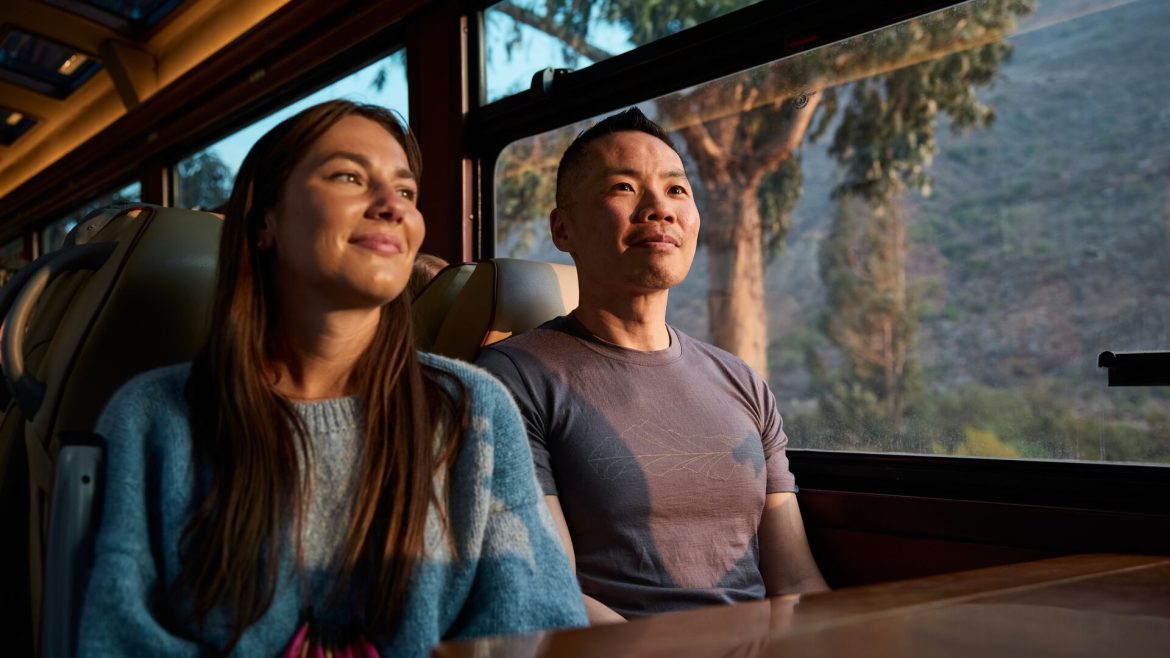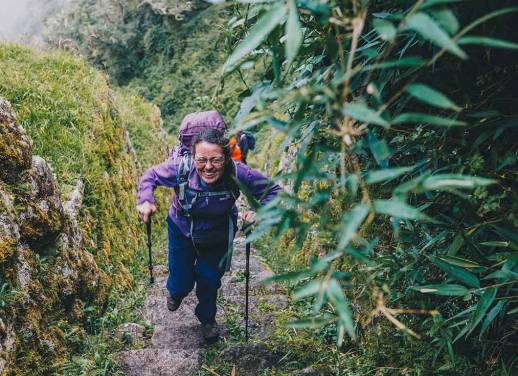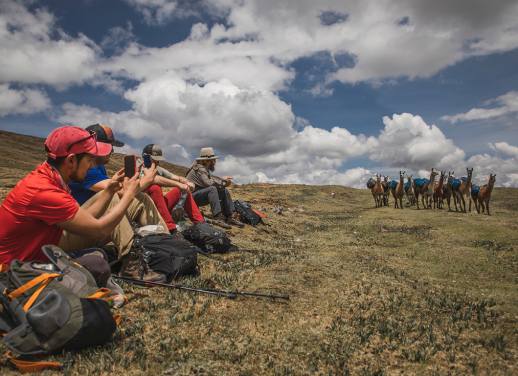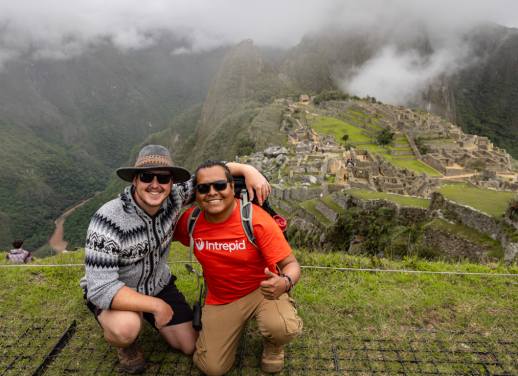Travel writer Katie Lockhart thought the arduous 43-kilometre Inca Trail trek was the only way to reach Peru’s 15th-century citadel. Turns out, you can jump on a 90-minute scenic train that takes you almost to the llama-dotted doorstep.
I breathed a sigh of relief when I saw I could take the train to Aguas Calientes – the gateway town to Machu Picchu – on my Classic Peru trip with Intrepid. As an American, with just two weeks of vacation a year and a strong distaste for hiking, it was a no-brainer.
If you’re not a trekker or you like the sound of arriving at Machu Picchu energised and fresh-faced for your photos, rather than having to hike the high-altitude Inca Trail over four days, the train is for you. Here’s what you need to know about arriving in style.
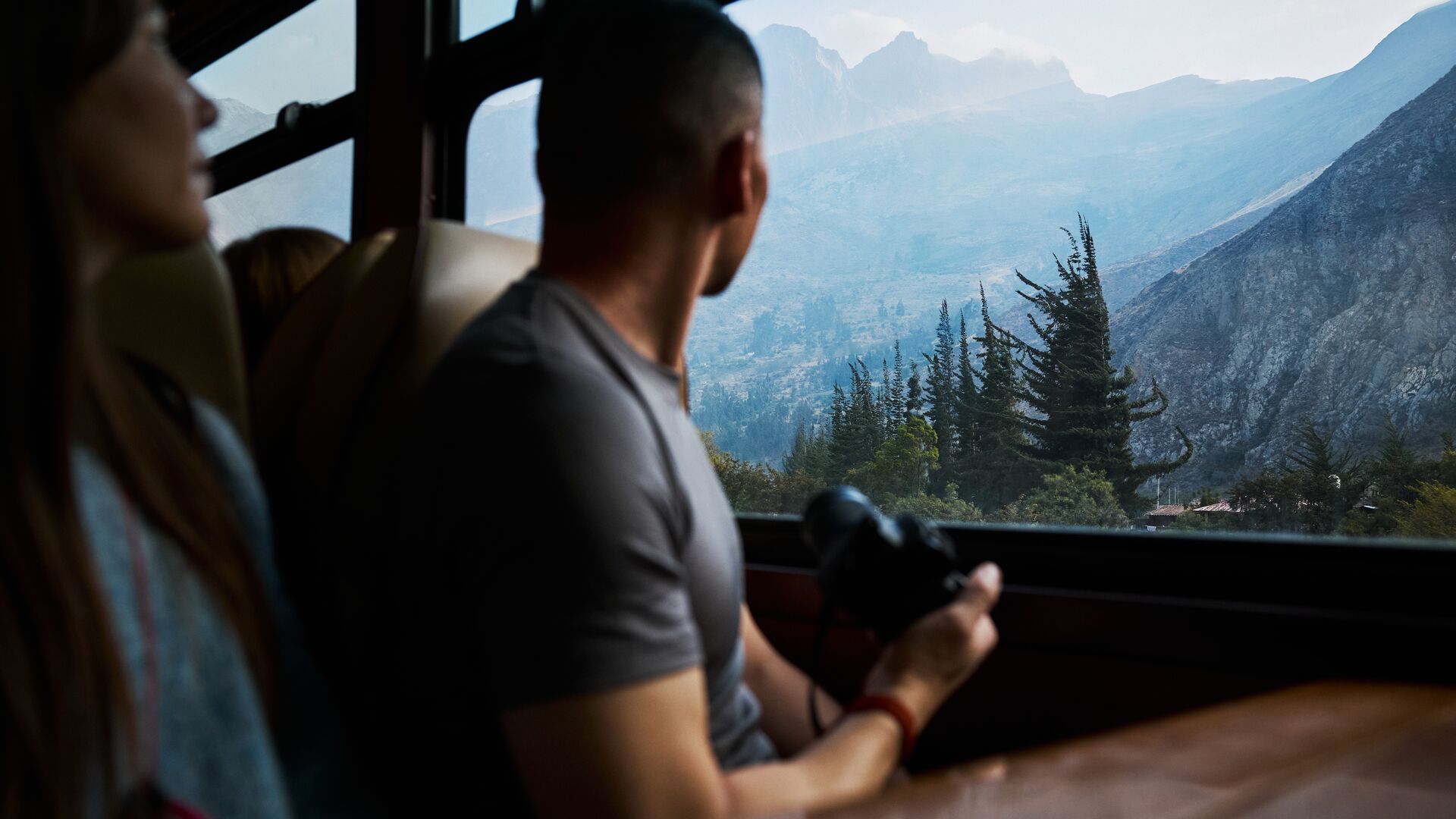
The perks of taking the train
Not everyone’s into high-altitude hiking, camping and going days without a shower. And that’s A-OK. I wanted to have enough energy to actually enjoy Machu Picchu, especially as it was one of my main reasons for visiting Peru. A few friends who had done the Inca Trail told me that once they arrived at the Sun Gate – the famous entrance only accessible on the Inca Trail – they were so exhausted they didn’t have much gas left to explore. I didn’t want that to be the case for my trip.
And don’t think you’ll miss out on the Andean highlands’ epic scenery just because you’re not wearing a pair of hiking boots. The Machu Picchu train journey is often listed among the world’s greatest rail routes. From the comfort of your seat, you’ll travel from the Andes’ grassy plains down into the lush cloud forest that shelters Machu Picchu.
You also get more time in Cusco or the Sacred Valley while the other travellers in your group are trekking – perfect if you’re time-strapped and want to pack in as much as possible.
Read more: Going beyond an icon on a journey to Machu Picchu with Intrepid
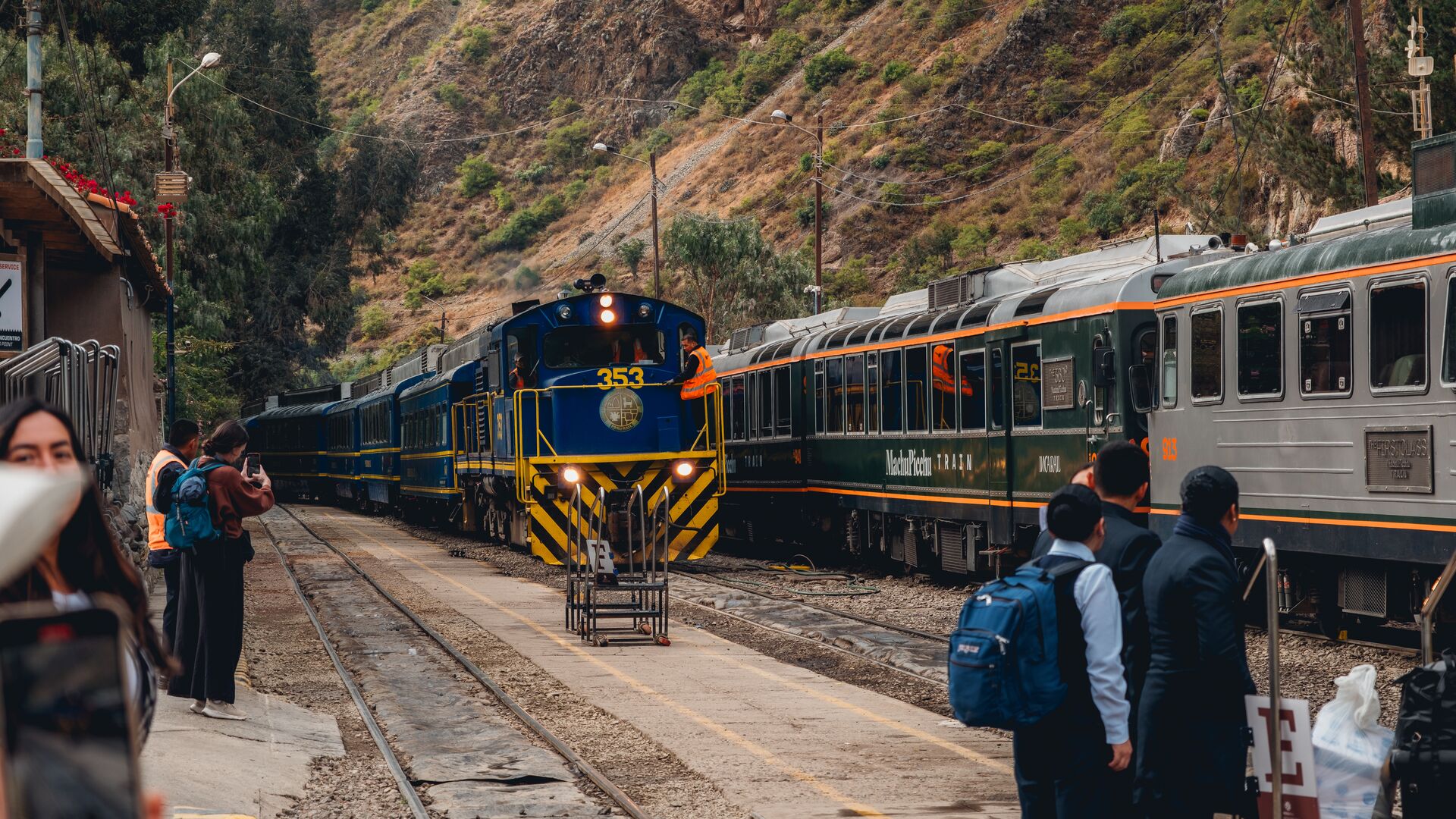
How to get to Machu Picchu by train
The train doesn’t go directly to Machu Picchu, but it gets pretty close. You’ll get off at Aguas Calientes, a small town just nine kilometres from the ruins. From there, a 30-minute bus or a 1.5-hour walk up a steep path takes you to the entrance.
Most travellers visiting Machu Picchu – either on a trek or by train – start their journey in Cusco, the closest major city to the Peruvian Andes. From Cusco, it’s about a two-hour drive to Ollantaytambo, where you can board the 90-minute train to Aguas Calientes.
You can also take the train directly from Cusco to Aguas Calientes, but I’m glad we took the Ollantaytambo route. It meant we could spend the morning at local markets in Pisac and visit a traditional community in the Sacred Valley for lunch. We also had time to explore the Inca ruins dotted around Ollantaytambo, an ancient town that still uses Inca water canals and farming terraces.
We boarded the train for Aguas Calientes that evening and stayed at a hotel before visiting Machu Picchu the following morning. Intrepid organised our train tickets, but if you’re travelling solo, be sure to book ahead of time with Peru Rail or Inca Rail as they sell fast – especially during peak season.
Read more: The joy of seeing Machu Picchu with the descendants of its builders
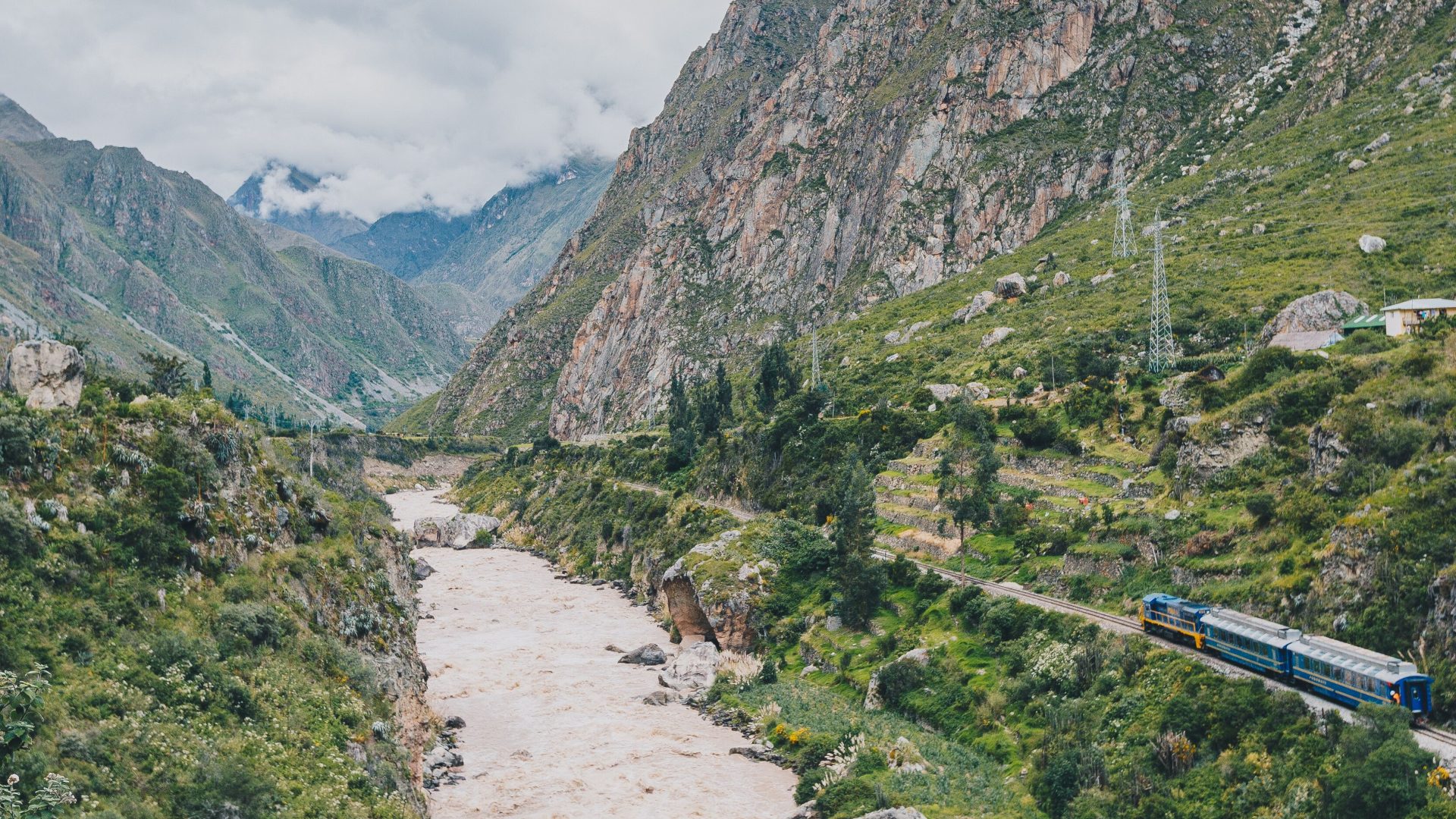
What to expect onboard
Above all else, expect sensational scenery. The journey follows the Urubamba River downstream through the Sacred Valley. Soon after leaving the station, we were rolling past corn fields, ancient Inca terraces and pointy Andean peaks.
As we got deeper into the valley, the vegetation became thicker and swathes of mist shrouded the mountains. Our Intrepid leader, Daniel, pointed out various Inca sites and landmarks along the way, including La Veronica, the highest peak in the Urubamba mountain range at 5860 metres.
Although the train travels fairly slowly (which is great for snapping photos), it can still be a little bumpy, so try to use the bathroom at the train station beforehand. There is a toilet on board, but it’s not ideal when the car is rocking back and forth. You can also buy light refreshments on board, though some tickets include a drink and a snack; I chose the non-alcoholic Andean Cocktail, while others opted for coca tea, a traditional Peruvian remedy for altitude sickness.
And don’t be alarmed if the train suddenly grinds to a halt and the conductor jumps onto the tracks. I almost had a heart attack, but he was just performing a manual switchback to adjust for the elevation change.
Getting to Machu Picchu was much easier than I expected. The carriage was comfortable, the windows were big and the pace was slow enough to take it all in. And the ruins of Machu Picchu themselves? Even better than I’d imagined.
Ready to ride the rails? Take the scenic train to Machu Picchu on a small group adventure with Intrepid.
This article was originally published in January 2018.

